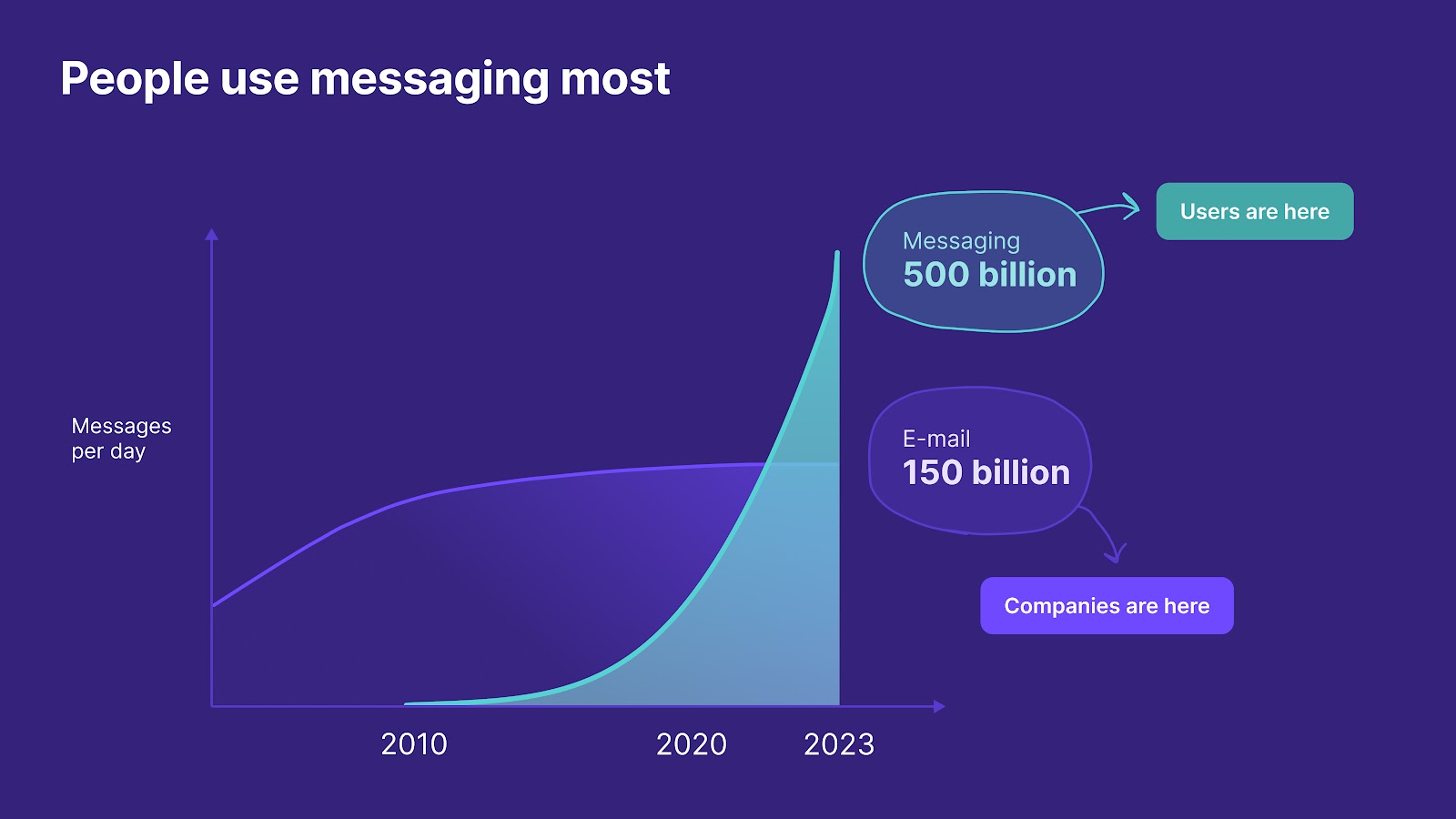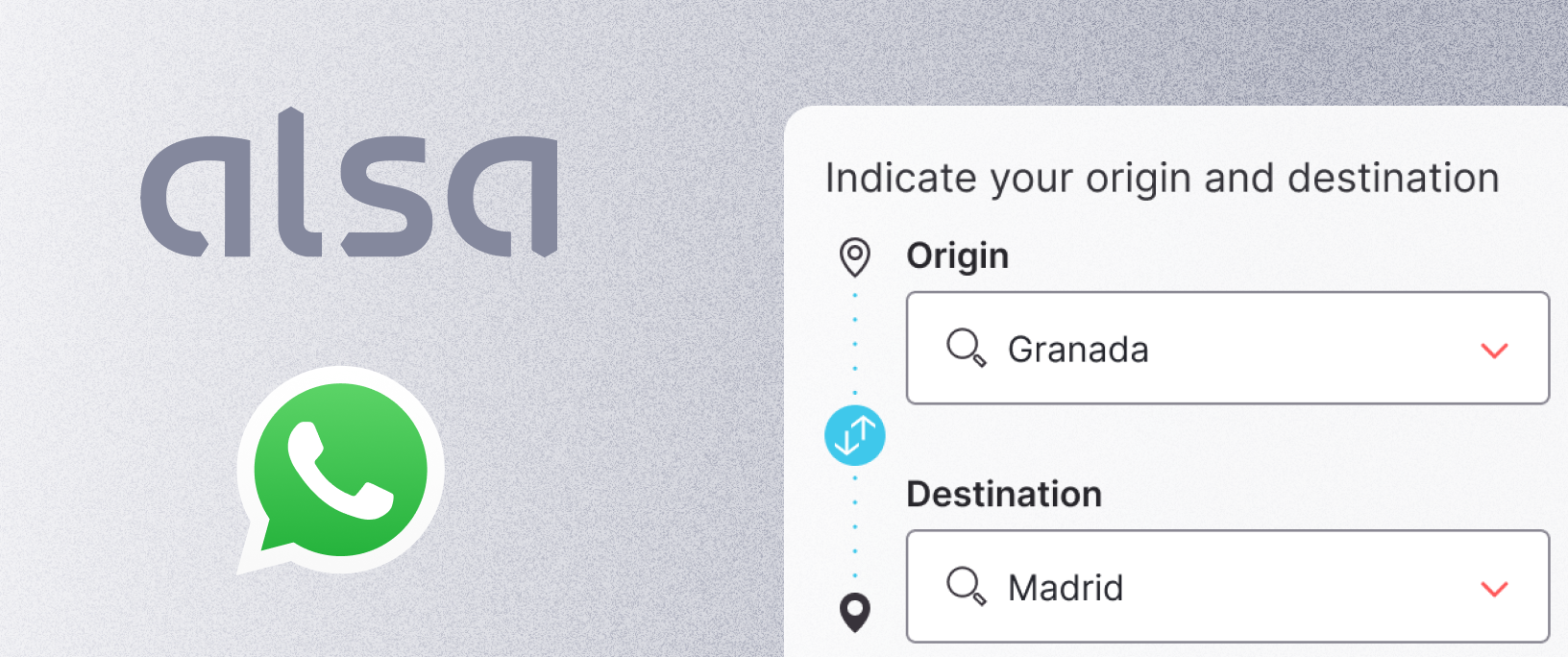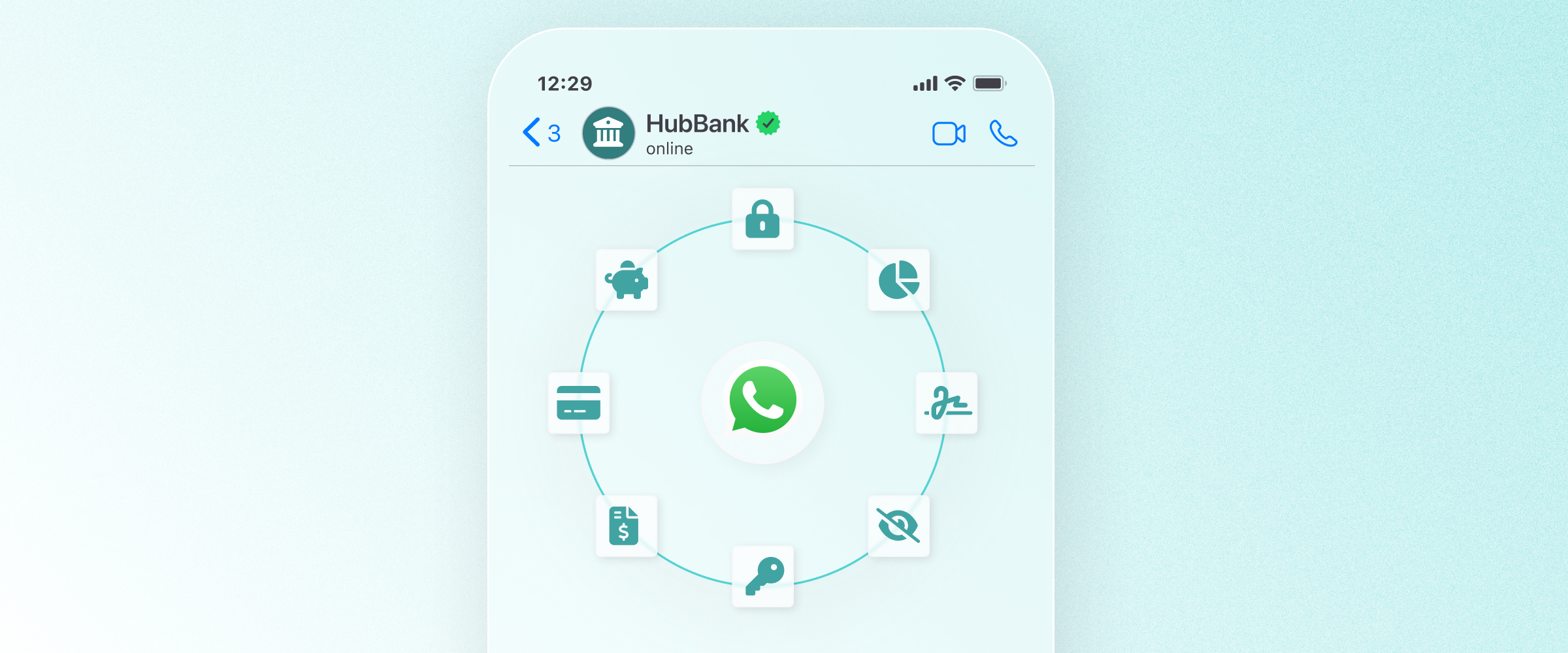
Conversational customer engagement is quickly becoming a necessity for businesses. As customers continue to embrace shopping via messaging apps, conversational commerce is sparking a global movement that is just beginning.
In this article, we’ll go over everything you need to know about conversational customer engagement and the tools you’ll need to make it happen.
What is conversational customer engagement?
Conversational customer engagement is the process of maintaining a two-way dialogue with customers as they move through the customer journey. Customers can receive support, ask questions, get personal recommendations, and otherwise interact with a business, all through popular conversational channels.
Having a conversational CX strategy is particularly important today, as we continue to embrace conversational commerce. Today, customers can discover, shop, and buy products without ever leaving their messaging apps.
Why messaging is replacing traditional web experiences
Messaging apps are on track to rival web browsers, the main point of contact between brands and their customers. Instead of opening Google Chrome to go online, we'll simply open WhatsApp. Instead of pulling up a fashion retailer's website, we'll message them.
Think back to 20 years ago when websites were made up of just text and hyperlinks, compared to where they are now. The same evolution is happening with chatbots and conversational apps. Right now, chatbots are mostly made up of text and some interactive elements (like buttons and carrousels) running on messaging apps.
Conversational apps already go beyond that, adding any graphical element rendered in these channels (like date pickers, log-ins). This is quickly evolving with the help of webviews, catalogues, payments, and more.
In the near future, what we'll have are mini-websites (or mini-programs) operating within messaging apps, as it already happens in WeChat. Messaging apps (like WhatsApp, Messenger, or Telegram) will become the new browsers (like Chrome, Mozilla, and Internet Explorer). The software within these messaging apps will be conversational apps.

The perfect environment for conversational customer engagement
These messaging apps are ideal for conversational customer engagement because they are:
- Popular: Customers are already on messaging apps, and they prefer them to traditional channels.
- Intuitive: The interfaces of messaging apps are engaging and familiar.
- Scalable: Messaging APIs can be integrated with numerous backend systems, such as CRMs, marketing platforms, and automation tools.
- Effective: They reduce operational costs while improving customer experiences.
Messaging is a ‘goldilocks’ zone for modern conversational experiences. Between its pervasiveness, the technology it allows, and our current culture of instant communication, it is just the right environment for a new type of conversational economy.
What is conversational CX and why it matters?
Conversational CX is the process of engaging with customers through natural conversation at each point in their buying journey. It aims to simplify each interaction, from marketing to customer service (and everywhere in between).
Where conversational customer engagement focuses on maintaining a dialogue across channels customers already use and engage with like WhatsApp, Messenger, or webchat, conversational CX takes it a step further—it’s about designing the entire customer experience around convenience, responsiveness, and relevance.
The rise of smartphones, streaming platforms, on-demand delivery, and messaging apps has created a world of instant convenience. Customers now expect that same level of ease and immediacy from every brand they interact with, whether they’re booking a hotel or managing an insurance policy.
In this environment, digital convenience is no longer a differentiator—it’s the baseline. Brands that want to win customer loyalty need to go beyond price or product and focus on frictionless, real-time service that adapts to each customer’s needs.
That’s where conversational CX shines.
It gives businesses the ability to deliver smart, responsive experiences at scale, through the channels customers already use. By designing journeys that feel more like helpful conversations than transactions, brands can reduce complexity, increase satisfaction, and build the kind of loyalty that drives long-term growth.
Key technologies powering conversational customer engagement
Delivering great conversational CX isn’t just about channel choice—it’s about building the right tech foundation. Behind every seamless interaction is a flexible ecosystem of tools working together to support real-time, personalised, and scalable conversations. A conversational-first mindset requires conversational-first technology, and here are the key components that make it all work:
Messaging platforms
The foundation of modern conversational engagement lies in messaging apps like WhatsApp, Instagram DMs, Facebook Messenger, and webchat. These channels provide the mobile-first, asynchronous experience today’s customers expect. They allow for rich media, automation, and ongoing dialogue, all without forcing customers to switch platforms or download additional apps.
Conversational apps as interfaces
Conversational apps act as the control hub between messaging platforms and your business systems. They unify channels, manage sessions, and connect the user experience to other tools like CRMs, CMSs, and NLU engines. Designed to scale across geographies and use cases, conversational apps make it possible to orchestrate automation, human agents, and third-party tools in one cohesive interface.
Sales AI Agents and purposeful automation
Forget clunky, one-size-fits-all bots. Today’s best conversational strategies use Sales AI Agents—automated assistants designed to replicate the experience of an expert in-store associate. These AI agents guide users through product discovery, provide contextual support, and hand off to human agents only when needed.
Thanks to advances in automation and natural language processing (NLP), these assistants aren’t just reactive—they’re proactive. They can anticipate customer needs, personalise product flows, and complete actions (like tracking orders or submitting claims) directly in chat. Up to 80% of routine customer service queries can now be resolved automatically, which frees up human agents for higher-impact tasks.
API-first integration and data orchestration
To make these experiences work seamlessly, you need a platform that integrates with your existing systems. APIs connect your conversational app to your CRM, fulfilment system, analytics tools, and other parts of your stack. An API-first approach ensures your setup is flexible, future-proof, and easily adaptable as your needs evolve.
In short, your conversational CX platform should be more than a chatbot—it should be the backbone of a scalable, intelligent, and integrated customer experience strategy.
Building a seamless, scalable messaging strategy
A truly effective conversational experience doesn’t stop at opening a new messaging channel. It requires thoughtful orchestration across platforms, smart use of automation, and intentional design that removes friction at every step. For messaging to drive results—both in satisfaction and efficiency—it needs to be part of a long-term, scalable strategy.
From multichannel to orchestrated omnichannel
Many brands still operate with a multichannel mindset—offering support on multiple platforms, but managing each in isolation. The result? Fragmented conversations, duplicated efforts, and customers repeating themselves.
The shift to omnichannel orchestration changes that. With the right platform, brands can unify WhatsApp, Messenger, Instagram, and webchat into a single interface. Conversations can start on one channel and continue on another, with full context carried forward. This unified journey not only improves the customer experience, it also makes operations more efficient.
Blending self-service, AI, and human support
A successful messaging strategy balances automation and human support. Bots and Sales AI Agents can handle repetitive, high-volume tasks—like FAQs, order tracking, or simple transactions—while human agents step in for high-impact interactions.
The key is seamless orchestration: smart routing ensures customers are handed off to the right person at the right time, with full context preserved. This hybrid approach gives customers faster resolutions, while freeing up agents to focus on complex cases, upselling opportunities, or emotionally sensitive issues.
Designing for conversational interfaces
UX design is a core pillar of any scalable messaging strategy. Great conversational apps don’t just "talk" — they guide users with intuitive interfaces built for messaging. That means carousels, quick replies, visual elements, WhatsApp webviews, and contextual prompts that reduce decision fatigue.
Design must also account for asynchronous communication. Messaging isn’t linear as customers might pause and return hours later. Your UX should feel seamless whether a reply comes in five seconds or five hours later.
Platform flexibility and long-term scalability
Finally, no messaging strategy can scale without the right technical foundation. That means choosing a platform that integrates with your existing tech stack—CRM, fulfillment, analytics, and more—and allows for future growth. With Hubtype’s open, API-first framework, teams can evolve quickly, localise easily, and roll out new use cases without rebuilding from scratch.
When built thoughtfully, messaging becomes more than a channel—it becomes the backbone of your customer experience.
What makes a great messaging experience
A great messaging experience doesn’t just respond—it anticipates, simplifies, and delights. It mirrors the kind of helpful, intuitive interactions we expect from a good in-store associate, but it happens where today’s customers spend their time: in chat.
Intuitive, visual interfaces
The best conversational journeys are easy to follow and don’t rely solely on text. Messaging UX today is far more than a thread of back-and-forth replies, it’s a combination of rich media and micro-interactions that help customers act faster and with more confidence.
Great messaging experiences often include:
- Date pickers for choosing delivery or appointment times
- Product carousels that let users swipe through items without leaving the chat
- Quick replies and buttons that eliminate the need to type
- Images, videos, and PDFs that clarify products or next steps
Instead of typing out a question about return policies, a customer can tap a quick reply. Instead of navigating to an external site, they can browse a collection right inside WhatsApp. This type of intuitive UX reduces friction and improves conversion.

Proactive and contextual communication
A great messaging experience is also proactive. It knows when to nudge the customer with a restock alert, a reminder to complete their checkout, or a recommendation based on past purchases.
But it’s not just about pushing information, it’s about opening a conversation. For example, when a customer receives a “Your order is on the way” message, it should come with an option to track the shipment or ask a follow-up question, all within the same thread.
Proactive messaging like this drives loyalty and engagement because it makes customers feel seen, supported, and in control of the experience.

How to future-proof your customer engagement stack
Future-proofing your customer engagement strategy means investing in a flexible, scalable architecture, built to grow with your business and adapt to changing behaviours.
That starts with APIs. An API-first approach ensures that your conversational systems can integrate easily with your ecommerce platform, CRM, fulfilment tools, and marketing stack. This modularity is essential for creating seamless, personalised customer journeys across all touchpoints.
Scalable automation is another critical piece. Brands that rely on rigid or one-size-fits-all chatbot builders will struggle to evolve. Instead, you need automation that’s dynamic and contextual, capable of handling routine tasks, while seamlessly handing off to human agents or Sales AI Agents when a deeper interaction is needed.
At Hubtype, we bring together messaging, automation, UX design, and enterprise system integration in one powerful platform. Our framework makes it easy for enterprises to orchestrate customer journeys that are frictionless, personalised, and ready to scale.
Ultimately, if you want to deliver experiences your customers actually want—ones that reflect how they live, shop, and communicate—messaging is no longer optional. It’s the foundation of modern customer service. Conversational customer engagement and conversational CX aren’t just trends; they’re the strategy for brands that plan to lead in the years ahead.
If you’re looking at conversational customer engagement as the next step in your CX strategy, let’s talk!








.jpg)


